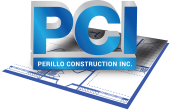In Florida, the 40-year building recertification is a mandatory process designed to ensure the continued safety and structural integrity of older commercial buildings. During this process, a licensed engineer conducts a thorough evaluation of the building’s structural and electrical systems. For many property owners, this inspection reveals issues that require immediate repair or upgrades in order to remain compliant and avoid costly fines—or worse, unsafe conditions.
Knowing what kinds of problems are commonly uncovered and how to address them efficiently can help property owners save time, control costs, and reduce stress during this critical milestone. Here’s a look at some of the most frequent repairs that follow a 40-year inspection—and the smartest way to tackle them.
Structural Cracks and Concrete Spalling
One of the most common findings in 40-year inspections is structural cracking or concrete spalling—where reinforced concrete begins to deteriorate and flake due to age, water infiltration, or corrosion of the steel reinforcement inside. This is especially prevalent in coastal Florida properties exposed to salt air and high humidity.
Addressing this issue requires removing damaged concrete, cleaning and treating the corroded steel, and applying a repair compound to restore strength. Ignoring structural cracks can lead to more serious issues, including compromised load-bearing elements or unsafe balconies.
Acting quickly with an experienced contractor ensures that repairs are made before the damage spreads, and helps keep the property structurally sound and safe for occupancy.
Outdated Electrical Systems
Another key part of the 40-year inspection is an evaluation of the building’s electrical systems. In many older commercial buildings, outdated wiring, overloaded panels, or insufficient grounding are flagged as safety hazards.
Common electrical updates include replacing outdated breakers, upgrading electrical panels, improving grounding systems, and ensuring all components meet modern codes. These upgrades not only help meet inspection requirements but also reduce the risk of electrical fires and system failures—especially important in buildings where technology demands have grown significantly since original construction.
Hiring a contractor who works closely with licensed electricians ensures these updates are made efficiently and to code, without unnecessary disruption to tenants or business operations.
Water Damage and Roof Leaks
Years of exposure to Florida’s climate can take a toll on roofs, walls, and ceilings. Inspectors often identify water damage, roof leaks, or drainage issues that compromise building integrity and create ideal conditions for mold growth.
Typical repairs involve resealing roofs, replacing damaged roofing materials, improving drainage systems, and repairing interior water damage. In some cases, full roof replacement may be necessary—especially if the roof is beyond its expected lifespan.
Prompt repairs not only ensure compliance but help prevent future costly issues like structural rot, mold remediation, and interior damage to occupied spaces.
Window and Door Failures
In older buildings, windows and doors can become difficult to operate, fail to seal properly, or allow water and air infiltration. These issues not only reduce energy efficiency but also compromise security and structural performance.
Repairs may involve resealing or replacing windows and doors, installing hurricane-rated upgrades, or adding weatherstripping and insulation. These updates improve occupant comfort, reduce utility bills, and help buildings better withstand severe weather.
Contractors experienced in building envelope improvements can make these updates efficiently, often as part of a broader renovation or compliance strategy.
Deteriorated Railings, Stairs, and Balconies
Safety-related components like balcony railings, exterior staircases, and elevated walkways are often called out during recertification inspections. Rusted railings, loose handrails, and cracking stair treads can pose serious hazards if not corrected.
Repairs typically include replacing rusted materials, reinforcing weakened structures, and ensuring that all features meet current safety codes. For multi-story buildings or those with exterior walkways, these repairs are critical to maintaining safety and preventing accidents.
Hiring a contractor with experience in structural and safety code compliance is essential to ensure these elements are properly inspected, repaired, and signed off by engineers.
How to Address Repairs Efficiently
Managing multiple repairs after a 40-year inspection can feel overwhelming—but the key to staying ahead of the curve is working with a contractor who can oversee the entire process from start to finish. While the initial inspection must be performed by a licensed engineer, all recommended work must be executed by qualified contractors who understand the recertification process and how to meet code quickly and cost-effectively.
A trusted contractor will:
- Coordinate with engineers to review inspection reports and understand required repairs
- Prioritize repairs based on urgency, cost, and permitting requirements
- Source qualified tradespeople and materials
- Schedule work to minimize business disruption or tenant inconvenience
- Ensure all repairs meet current codes and inspection standards
- Manage communication and documentation throughout the process
Stay Proactive, Stay Compliant
The 40-year inspection isn’t just a legal requirement—it’s an opportunity to improve your building’s safety, efficiency, and value. Addressing common issues like structural cracks, outdated electrical systems, and water damage quickly and professionally can help prevent costly emergencies and maintain tenant confidence.
For Florida property owners looking to navigate the 40-year inspection process smoothly, it helps to have an experienced construction partner on your side. While Perillo Construction is not an engineering firm, they coordinate with licensed engineers and manage every aspect of the repair process—ensuring your building is brought up to code efficiently and with minimal disruption.
To learn more about how Perillo Construction can assist with your 40-year building recertification and repair needs, visit their Contact Us page.

